[Editor’s Note: Mad Scientist Laboratory is pleased to announce the premier episode of “The Convergence” podcast. Please note that this podcast and several of the embedded links below are best accessed via a non-DoD network — Enjoy!]
The Army Mad Scientist Initiative is launching our very own podcast — “The Convergence.” After several years of successfully partnering on podcasts with West Point’s Modern War Institute, we were inspired to found our own with a distinct focus on divergent viewpoints, a challenging of assumptions, and insights from thought leaders and subject matter experts.
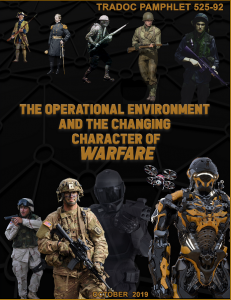 This podcast is another component of our wider effort to reach out to diverse groups and really open the aperture of our analysis and understanding of the operational environment. The purpose of “The Convergence” is to explore technological, economic, and societal trends that disrupt the operational environment and to get a diversity of opinions on the character of warfare. Like the Mad Scientist Laboratory and our conferences, the podcast will feature disruptive thinkers and world-class experts to expand the thinking and analysis of our Community of Action.
This podcast is another component of our wider effort to reach out to diverse groups and really open the aperture of our analysis and understanding of the operational environment. The purpose of “The Convergence” is to explore technological, economic, and societal trends that disrupt the operational environment and to get a diversity of opinions on the character of warfare. Like the Mad Scientist Laboratory and our conferences, the podcast will feature disruptive thinkers and world-class experts to expand the thinking and analysis of our Community of Action.

Our first episode features Dr. Sean McFate, foreign policy expert, author, and novelist. He is a Senior Fellow at the Atlantic Council, a Washington DC think tank, and a professor of strategy at the National Defense University and Georgetown University’s School of Foreign Service. Additionally, he serves as an Advisor to Oxford University’s Centre for Technology and Global Affairs.

Dr. McFate’s newest book is The New Rules of War: Victory in the Age of Durable Disorder, which was picked by The Economist as one of their best books of 2019. It has been called “The Freakonomics of modern warfare.” In our podcast, Dr. McFate provides his opinions on the changing character of warfare, the rise of private military contractors, information warfare, and the effects these trends will have on the operational environment.
Dr. McFate’s career began as a paratrooper and officer in the U.S. Army’s 82nd Airborne Division, where he graduated from elite training programs such as the Jungle Warfare School in Panama and was also a Jump Master. He then became a private military contractor where, among his many experiences, he dealt with warlords in the jungle, raised armies for U.S. interests, rode with armed groups in the Sahara, conducted strategic reconnaissance for the extractive industry, transacted arms deals in Eastern Europe, and helped prevent an impending genocide in east Africa.
Dr. McFate holds a BA from Brown University, MPP from the Harvard Kennedy School of Government, and a Ph.D. in international relations from the London School of Economics and Political Science (LSE). He lives in Washington, DC. For more information, see www.seanmcfate.com.
 Click here to listen to Dr. McFate in our premier podcast episode of “The Convergence,”…
Click here to listen to Dr. McFate in our premier podcast episode of “The Convergence,”…
… stay tuned to the Mad Scientist Laboratory as we will be releasing a new podcast every other week with exciting and impactful guests,…
… listen to the following MWI podcasts with these Mad Scientists:
-
- How the Army is Preparing for the Future Battlefield, with MG John George and Mr. Jay Harrison
- Former Deputy Defense Secretary Robert Work Assesses the Future Battlefield
- What Does the Future Hold for the US Military in Space? with Dr. Moriba Jah
… and don’t forget to take a few minutes to complete our short, on-line Global Perspectives Conference Survey. Stay tuned to the Mad Scientist Laboratory to learn what insights we glean from this survey regarding potential OE trends, challenges, technologies, and disruptors.



 There’s a debate underway about the
There’s a debate underway about the  Admiral Wylie opined “the ultimate determinant in war is a man on the scene with a gun.”
Admiral Wylie opined “the ultimate determinant in war is a man on the scene with a gun.” Secondly, Phillip Meilinger makes a strong case that drone crews firing missiles at insurgents from 3,000 miles away or navies blockading countries and staving their people into submission do not experience war the same as those hoplite infantry did years ago.
Secondly, Phillip Meilinger makes a strong case that drone crews firing missiles at insurgents from 3,000 miles away or navies blockading countries and staving their people into submission do not experience war the same as those hoplite infantry did years ago.
 If so, the second aspect of war’s changing nature comes into play. If a nation’s borders cannot be penetrated and its critical centers of gravity attacked using kinetic means, perhaps
If so, the second aspect of war’s changing nature comes into play. If a nation’s borders cannot be penetrated and its critical centers of gravity attacked using kinetic means, perhaps The application of
The application of 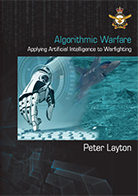 Dr. Peter Layton is a Visiting Fellow at the Griffith Asia Institute, Griffith University. A former RAAF Group Captain, he has extensive defense experience, including in the Pentagon and at National Defense University. He holds a doctorate in grand strategy. He is the author of the book ‘
Dr. Peter Layton is a Visiting Fellow at the Griffith Asia Institute, Griffith University. A former RAAF Group Captain, he has extensive defense experience, including in the Pentagon and at National Defense University. He holds a doctorate in grand strategy. He is the author of the book ‘

 What about the incident at the intel battalion’s favorite TDY hotel with a pool-side storage safe? Soldiers went swimming and tossed their wallets into the safe, unaware that an
What about the incident at the intel battalion’s favorite TDY hotel with a pool-side storage safe? Soldiers went swimming and tossed their wallets into the safe, unaware that an
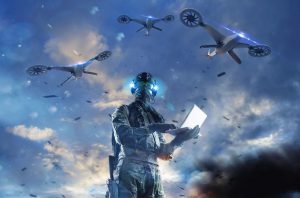 Or the drones that hovered over Camp Zama, broadcasting fake Wi-Fi hotspots. The enemy scooped up so much intelligence and — ah, you get the picture. Overseas bases were so vulnerable back then.
Or the drones that hovered over Camp Zama, broadcasting fake Wi-Fi hotspots. The enemy scooped up so much intelligence and — ah, you get the picture. Overseas bases were so vulnerable back then.



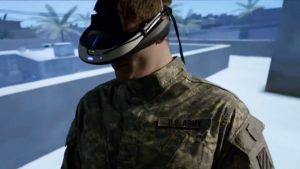
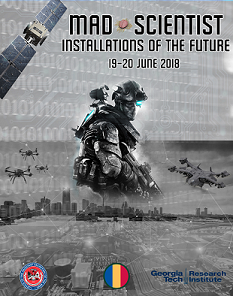 If you were intrigued by this vision of a future Army installation, please plan on joining us virtually at the Mad Scientist Installations of the Future Conference, co-sponsored by the Office of the Assistant Secretary of the Army for Installations, Energy and Environment (OASA (IE&E)); Georgia Tech Research Institute (GTRI); and Headquarters, U.S. Army Training and Doctrine Command (TRADOC), at GTRI in Atlanta, Georgia, on 19-20 June 2018. Click
If you were intrigued by this vision of a future Army installation, please plan on joining us virtually at the Mad Scientist Installations of the Future Conference, co-sponsored by the Office of the Assistant Secretary of the Army for Installations, Energy and Environment (OASA (IE&E)); Georgia Tech Research Institute (GTRI); and Headquarters, U.S. Army Training and Doctrine Command (TRADOC), at GTRI in Atlanta, Georgia, on 19-20 June 2018. Click
 There are no facts about the future. Leaders interested in building
There are no facts about the future. Leaders interested in building 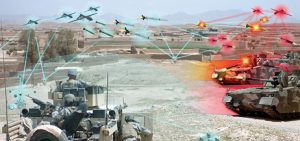
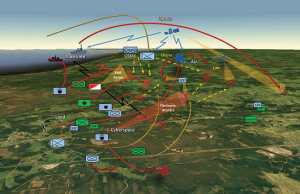 1. Contested in all domains (air, land, sea, space, and cyber). Increased lethality, by virtue of
1. Contested in all domains (air, land, sea, space, and cyber). Increased lethality, by virtue of 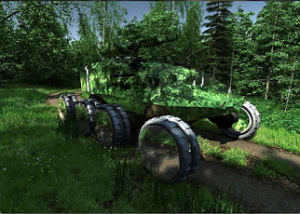
 3. Trans-regional, gray zone, and hybrid strategies with both regular and irregular forces, criminal elements, and terrorists attacking our weaknesses and mitigating our advantages. The ensuing spectrum of competition will range from peaceful, legal activities through violent, mass upheavals and civil wars to traditional state-on-state, unlimited warfare.
3. Trans-regional, gray zone, and hybrid strategies with both regular and irregular forces, criminal elements, and terrorists attacking our weaknesses and mitigating our advantages. The ensuing spectrum of competition will range from peaceful, legal activities through violent, mass upheavals and civil wars to traditional state-on-state, unlimited warfare.
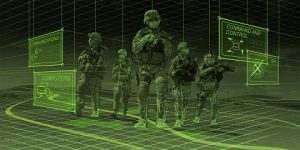

 2. What signature does this system present to an adversary? It is difficult to hide on the future battlefield and temporary windows of advantage will require formations to reduce their battlefield signatures. Capabilities that require constant multi-directional broadcast and units with large mission command centers will quickly be targeted and neutralized.
2. What signature does this system present to an adversary? It is difficult to hide on the future battlefield and temporary windows of advantage will require formations to reduce their battlefield signatures. Capabilities that require constant multi-directional broadcast and units with large mission command centers will quickly be targeted and neutralized.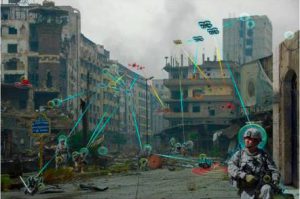
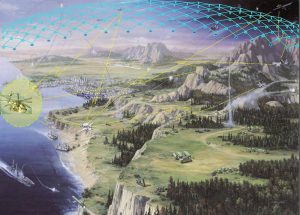
 5. How does this capability help win in competition short of conflict with a near peer competitor? Near peer competitors will seek to achieve limited objectives
5. How does this capability help win in competition short of conflict with a near peer competitor? Near peer competitors will seek to achieve limited objectives 
 AI-enabled IO present a more pressing strategic threat than the physical hazards of
AI-enabled IO present a more pressing strategic threat than the physical hazards of

 Given that malign actors can now employ AI to lie “
Given that malign actors can now employ AI to lie “
 The DoD is looking at AI but remains focused on
The DoD is looking at AI but remains focused on  At
At